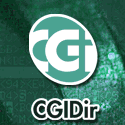|
|
|||||||||||||||||||||||||
|
|||||||||||||||||||||||||
|
Search
Scripts
News by JavaScriptSearch
Building Ajax-Style Applications with ASP.NET Atlas: O'Reilly Releases "Programming Atlas"
JavaScriptSearch "If various weblogs and online and print commentaries are to be believed, Ajax is the future of web development, the enabler of Web 2.0, and probably a cure for fatal diseases as well," muses author and JavaScript expert Christian Wenz. And certainly, it does seem that Ajax is the answer for web developers who want to provide their users with a much richer client experience but don't want to (or, for practical reasons, cannot) write a Windows client application. It lets web applications behave almost like desktop applications, with features such as keyboard shortcuts and drag and drop.
Not to be left behind, Microsoft has announced its own framework that provides Ajax functionality, but with added controls and features that make the development of modern web applications even easier. Called "ASP.NET Atlas" (or just "Atlas," for short) this set of technologies offers .NET developers many of the same benefits for Ajax technologies that ASP.NET provides for server side development. In his new book, Programming Atlas (O'Reilly, US $34.99), Christian Wenz shows readers how to use this new framework to build Ajax-savvy websites. "Atlas is quite mature now," says Wenz. "A go-live license exists and the user community is growing. Ajax is becoming more and more important, and Atlas can help a lot along the way, providing convenient and common functionality and thereby facilitating and speeding up the Ajax development process--just like ASP.NET 2.0 does for web development." Not just a drag-and-drop ASP.NET 2.0 book, Programming Atlas dives into the technologies that make Ajax work. The book begins with a tour of the technologies most often associated with Ajax. Once readers have mastered the fundamentals, Wenz unpacks the Atlas framework and shows them how to put its tools to work. They'll learn how to:
Wenz says that his book "does not focus on 'fancy' examples but has a didactical focus, showing every important aspect of Atlas." The book is up to date, includes coverage of the Atlas Control Toolkit (to which Wenz contributed), and provides Ajax and JavaScript basics as well. "I'm a big believer in the 'show, don't tell' principle," says Wenz. "Therefore the book contains a large number of examples showing the key aspects of the Atlas framework. I'm also a fan of focusing on relevant facts, so I've created small examples, each conveying one or two points. In my experience as an authora dn trainer, shorter examples produce better results and make learning easier."
|
||
|
|
|
|
| Copyright © 1998 - 2018 DevStart, Inc. All Rights Reserved | ||




 NEWS BY MONTH
NEWS BY MONTH EDITOR'S DESK
EDITOR'S DESK SUBMIT NEWS
SUBMIT NEWS

